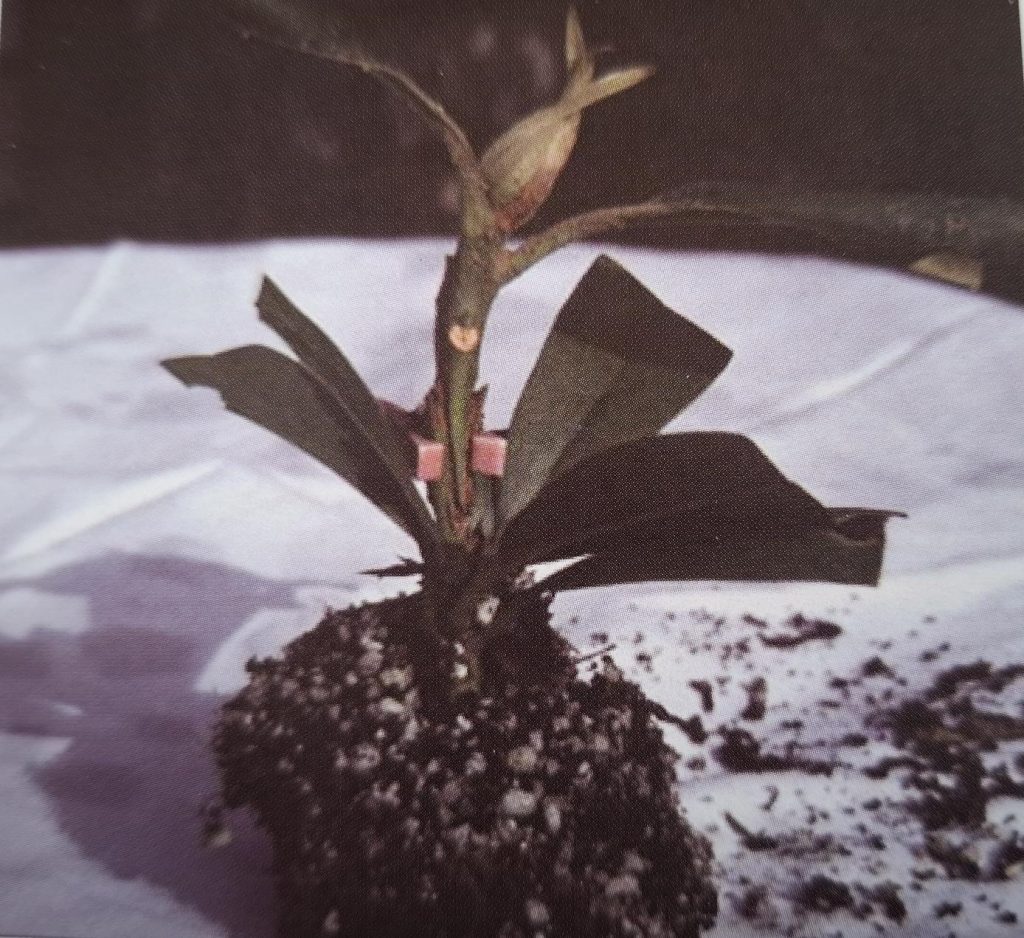Propagation of Rhododendrons by Grafting. Alan Clark
All photos in this article by Alan Clark.
This paper sets out to explain two types of rhododendron grafts.
Understock: Rhododendron ‘Cunningham’s White`. This very hardy hybrid is now widely used due to its easy rooting and compatibility with most Subgenus Hymenanthes species and hybrids. Some incompatibility has been noted with some forms of R. bureavii and some members of the Falconera and Grandia subsections. These should be grafted on to 4 year old seedlings raised from relevant open pollinated seed.

Terminal cuttings of Rhododendron ‘Cunningham’s White’ are taken in early August and are inserted one to a 4 inch pot, so that their leaves are positioned just above compost level. The following spring the terminal bud will produce an upright shoot to which a scion can be grafted during late July through to early September, using the reverse saddle grafting method. Internodal cuttings can also be used for side veneer grafts. Trays can also be used and placed within a simple home made frame within a polythene tunnel. Due to the fact that the scion and understock the same age, union is usually very rapid.
Rooting medium: well soaked standard grade perlite, mixed with approximately 10% by volume, sieved medium grade moss peat or a suitable lime free compost.
Scion preparation: Scions should only be collected from healthy plants and preferably without flower buds. Lower leaves should be removed and remaining foliage should be shortened by one third, to reduce water loss.

Types of grafts:
Nurse or cutting graft: This method entails joining two unrooted cuttings and then treated as one cutting.
Reverse saddle and side veneer graft: Experiments have shown that better results are obtained by removing the completed graft and planting in a well drained lime free compost within the frame.



No artificial heat is used with the methods described above, grafting is normally complete by the following May, when the scion’s terminal bud should be pinched out to induce branch formation.
If inter nodal cuttings and the side veneer method is employed, all the under stock material above the graft union should be removed once the scion is in active growth.
Some species within the subsection Taliensia have been known to “sulk'” and may take 12 months before the scion is truly active.
Alan Clark.

